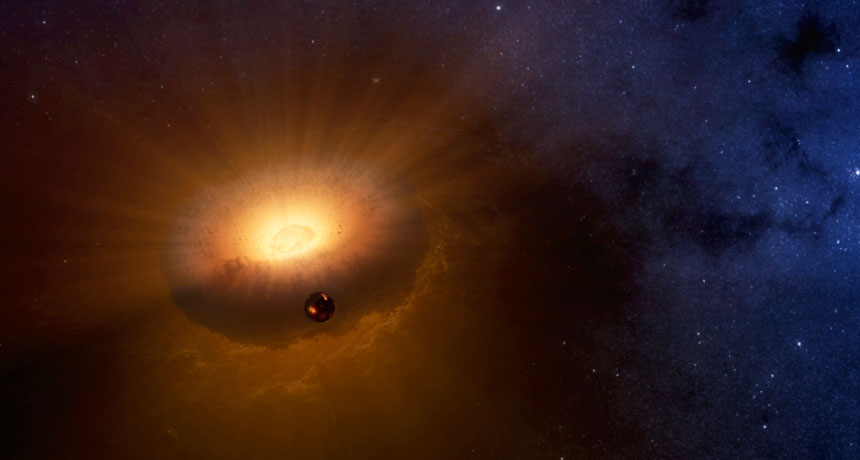How a vaporized Earth might have cooked up the moon

The moon might have formed from the filling during Earth’s jelly doughnut phase.
Around 4.5 billion years ago, something hit Earth, and the moon appeared shortly after. A new simulation of how the moon formed suggests it took shape in the midst of a hot cloud of rotating rock and vapor, which (in theory) forms when big planetary objects smash into each other at high speeds and energies. Planetary scientists Simon Lock of Harvard University and Sarah Stewart of the University of California, Davis proposed this doughnut-shaped planetary blob in 2017 and dubbed it a synestia (SN: 8/5/17, p. 5).
Radiation at the surface of this swirling cloud of vaporized, mixed-together planet matter sent rocky rain inward toward bigger debris. The gooey seed of the moon grew from fragments in this hot, high-pressure environment, with a bit of iron solidifying into the lunar core. Some elements, such as potassium and sodium, remained aloft in vapor, accounting for their scarcity in moon rocks today.
After a few hundred years, the synestia shrank and cooled. Eventually, a nearly full-grown moon emerged from the cloud and condensed. While Earth ended up with most of the synestia material, the moon spent enough time in the doughnut filling to gain similar ingredients, Lock, Stewart and colleagues write February 28 in Journal of Geophysical Research: Planets .
The simulation shakes up the prevailing explanation for the moon’s birth: A Mars-sized protoplanet called Theia collided with Earth, and the moon formed from distinct rubble pieces. If that’s true, moon rocks should have very different chemical compositions than Earth’s. But they don’t.
Other recent studies have wrestled with why rocks from the moon and Earth are so alike (SN: 4/15/17, p. 18). Having a synestia in the mix shifts the focus from the nature of the collision to what happened in its aftermath, potentially resolving the conundrum.